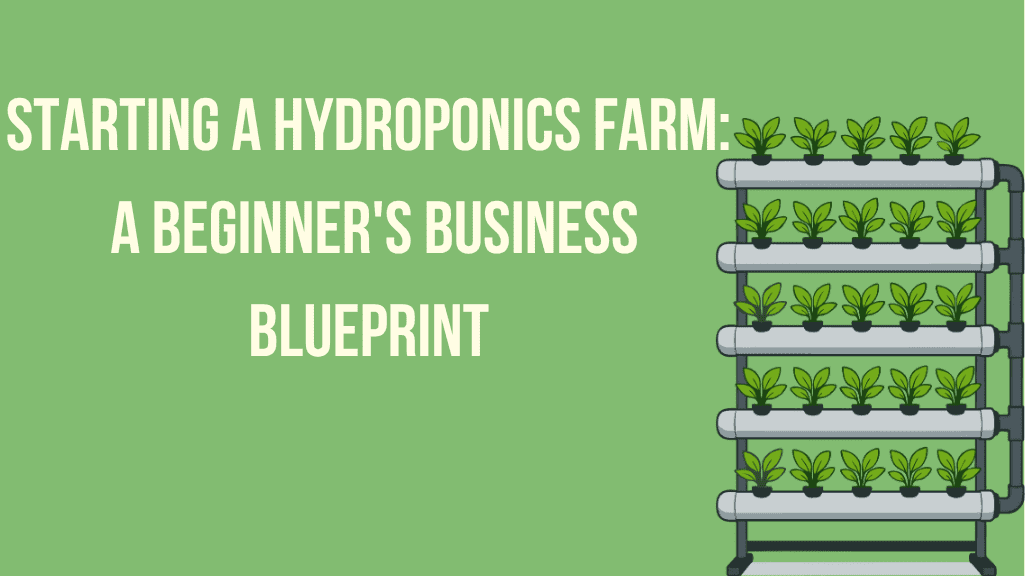The modern consumer wants fresh, local, and sustainable food. This shift in demand has opened up incredible opportunities for entrepreneurs who can think outside the traditional agricultural box. One of the most promising ventures in this space is commercial hydroponics—a method of growing plants without soil. But how do you go from a simple idea to a thriving, soil-less farm? It starts with a solid business blueprint.
What Exactly is a Commercial Hydroponics Farm?
Before you start scouting locations or buying equipment, it’s essential to understand what you’re building. A commercial hydroponics farm isn’t just a large-scale hobby; it’s a controlled environment agriculture (CEA) business. Instead of soil, you’ll use a nutrient-rich water solution to deliver everything plants need directly to their roots. This method allows for faster growth cycles, higher yields per square foot, and year-round production, independent of weather conditions. It’s agriculture transformed into a precise, tech-forward manufacturing process.
Crafting Your Business Plan: The First Critical Step
Like any successful enterprise, a hydroponics farm starts not with a seed, but with a solid plan. A well-researched business plan is your roadmap, guiding your decisions and helping you secure funding. It forces you to think critically about every aspect of the venture. Key components should include a market analysis to identify your target customers (e.g., local restaurants, farmers’ markets, grocery co-ops), a competitive analysis, and detailed financial projections. For a comprehensive guide on structuring this document, the U.S. Small Business Administration (SBA) offers excellent resources to get you started.
Navigating the Legal and Regulatory Landscape
With a plan in hand, you’ll need to make your operation official. This is where many aspiring entrepreneurs get stuck, but breaking it down into manageable steps makes it straightforward. First, choose a business structure, such as an LLC or a sole proprietorship, that best suits your financial situation and liability tolerance. Next, you’ll need to register your business name and obtain the necessary federal and state tax ID numbers.
Depending on your location, you may also need specific agricultural permits, water rights certifications, and food handling licenses. Be sure to check local zoning ordinances to ensure your chosen location is approved for commercial agricultural activities. The USDA’s portal for new farmers is a valuable starting point for understanding federal programs and regulations.
Estimating Startup Costs and Securing Funding
Now for the question every entrepreneur asks: how much will this cost? The initial investment for a hydroponics farm can vary widely based on scale and sophistication. Your primary expenses will include the hydroponic systems (like Nutrient Film Technique or Deep Water Culture), grow lights, climate control systems (HVAC), pumps, nutrient solutions, and seeds.
Don’t forget operational costs like rent or mortgage, utilities, labor, and marketing. The efficiency of these systems is a major selling point; studies show that the successful cultivation of various plants using hydroponic methods can reduce water consumption by up to 90% compared to traditional soil-based agriculture. To cover these costs, you can explore options like traditional small business loans, equipment financing, or even agricultural grants designed to promote sustainable farming.
Setting Up Your Operation: From System to Sale
Once funding is secured and the paperwork is filed, it’s time to build your farm. This is where your business blueprint becomes a physical reality. The first major decision is choosing the right hydroponic system for the crops you plan to grow. Leafy greens, for example, thrive in NFT systems, while vining plants like tomatoes may do better in bato bucket systems. Creating the optimal growing environment is paramount; you’ll need to precisely control light, temperature, humidity, and the pH of your nutrient solution.
Sourcing high-quality seeds and nutrients is just as important as your equipment. Finally, establish your sales channels before your first harvest is ready. Building relationships with local chefs or securing a spot at a farmers’ market early on will ensure you have buyers waiting. For those looking to dive deeper into the science of controlled environments, university resources like Cornell’s Controlled Environment Agriculture program offer extensive research and information.
Building Your Marketing and Distribution Strategy
Growing crops successfully is only half the journey; getting them into customers’ hands is where your business truly comes alive. A clear marketing strategy ensures your product doesn’t just grow but also sells. Start by defining your core sales channels: local restaurants, subscription-based community-supported agriculture (CSA) boxes, or farmers’ markets. Each option has unique advantages in terms of volume, margin, and brand visibility.
Digital platforms also play a huge role. Many successful hydroponic farms use social media to showcase their growing process, highlight freshness, and build consumer trust. Transparency is a powerful differentiator, and inviting your audience to see how their food is produced can strengthen loyalty. Partnering with local grocers or co-ops adds stability to your revenue streams while keeping distribution costs manageable.
Frequently Asked Questions
How much space do I need to start a small commercial hydroponics farm?
A great advantage of hydroponics is its small footprint. You can start a viable small-scale commercial operation in as little as 500 to 1,000 square feet, such as in a garage, basement, or a small greenhouse.
What are the most profitable crops for a beginner?
For beginners, it’s wise to start with crops that have fast growth cycles and high demand. Leafy greens like lettuce, kale, and spinach are excellent choices. Herbs such as basil, mint, and cilantro are also highly profitable and grow quickly.
Is hydroponic farming considered organic?
This is a complex and debated topic. In the U.S., the USDA does allow hydroponically grown produce to be certified organic, provided the operation meets all other organic standards, such as using approved nutrient solutions and avoiding synthetic pesticides.
How long does it typically take for a hydroponics farm to become profitable?
Profitability timelines depend heavily on your initial investment, operational costs, crop choice, and market pricing. A small, efficiently run farm focused on high-demand crops can potentially reach profitability within 18 to 24 months.






